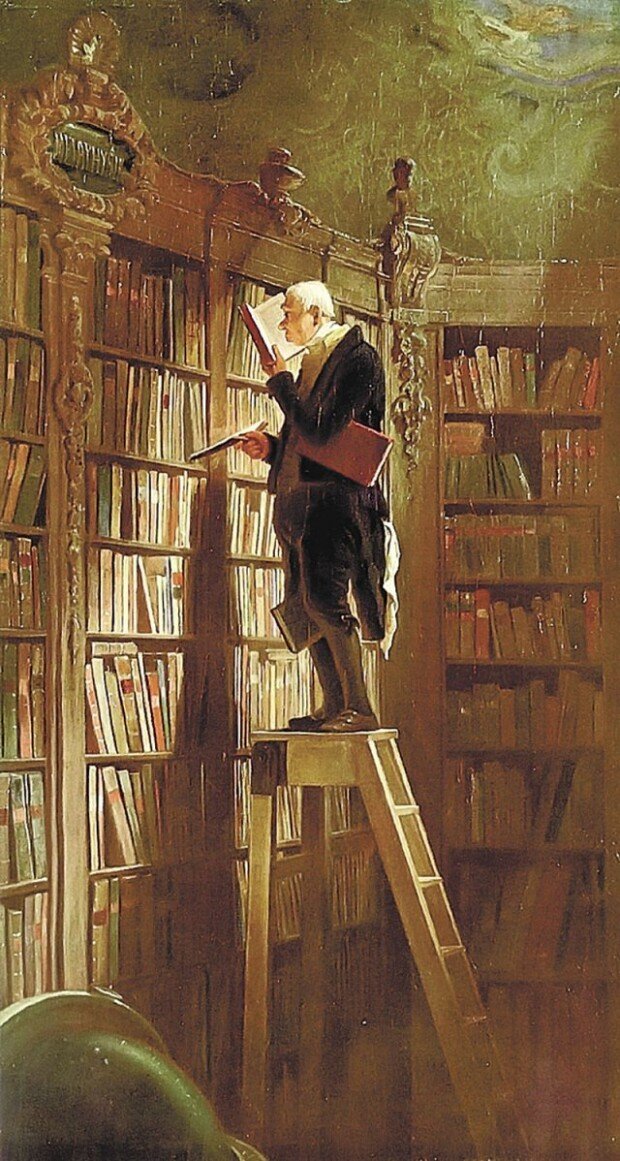Time running backwards
Time running backwards
Posted January. 13, 2022 07:51,
Updated January. 13, 2022 07:51

Who would be happier than someone who is immersed in what he loves? German painter Carl Spitzweg (1808-1885) painted an old man immersed in reading at an antique library. Who was the old man and what kind of book was he reading so passionately?
Born to a wealthy merchant, Spitzweg was a pharmacist but switched to a painter without hesitation as soon as he received inheritances. Although he had never received formal art education, he learned various techniques and styles by looking at the works of masters displayed in art museums. In particular, he gained much popularity for his witty caricatures influenced by British painter William Hogarth (1697-1764).
This painting, which is considered one of Spitzweg’s representative works, features an old man immersed in reading. The gray-haired man, who is severely nearsighted, is reading a book standing at the top of a library ladder. He has books between his legs and under his arm, not to mention the one he is holding with his both hands. He is so immersed in reading that he does not even know his handkerchief is slipping down from his pocket. One might think that he is reading an interesting novel, but the nameplate on the bookshelf reads ‘metaphysics.’ He is into classic philosophical books. The Fresco painting on the ceiling and the decorative bookshelves are the ones that were in fashion in the Rococo era. The black trousers the man is wearing are also out of fashion because they were usually worn by aristocrats in the 18th century. The painter first named the painting “Librarian” and then changed it to “Bookworm.” It means the painting is a portrait of an upper-class intellectual who likes to read, not a portrait of someone who has a specific profession. In the bottom left corner of the painting, a globe, which symbolizes the outside world, is left unattended covered in dust.
The painting was painted two years after the Revolutions of 1848. It was a time when revolutionary forces, who wanted change, and conservatives, who wanted to maintain the vested rights, clashed. The old man in the painting is not interested in the outside world and finds safety and happiness in old knowledge. His time is running backwards. Spitzweg painted this caricature to mock those, who are trapped in the past and refused to change.







